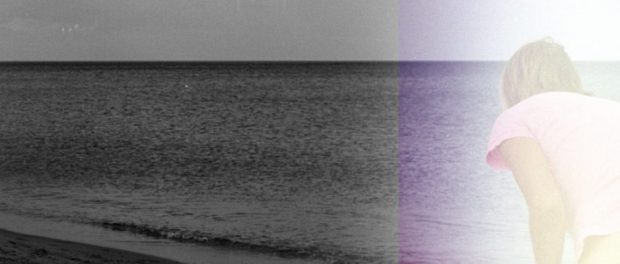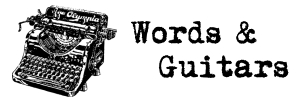Drøne – A Perfect Blind

Drøne, as a name, is a flood of misdirection. It implies both vaguely Scandinavian origins and a genre label – neither of which is accurate. Duality and sleight of hand seem to be the raison d’être behind this outfit, and their new release, A Perfect Blind.
The title is a term implying a location in which the watcher can observe a subject while remaining completely unseen. The cover is cleaved in half; one one side, a stately black and white seaside suggesting stock footage of 1940 invasion watches along the British coastline, while the other side of the same beach has been refracted into pinks, purples, bleached out white, while a figure – backside turned to the camera – seems halfway through changing. The music itself matches this combination of seriousness and irreverent playfulness perfectly. Throughout, traditional acoustic instruments are spliced with an array of found sounds and noise generators to create something that is both formal and disordered, harking to both past and present while feeling most firmly rooted in some unreachable middle-ground.
The titles of the two tracks are suggestive of the style of motion therein. The A-side, ‘Back to the Station’, has had me enthralled for days by the best use of a falling rain field recording I think I’ve ever heard: the heavy storm has a real intensity and motion sufficient to provide a dancing backdrop to a pulsing (heart) beat while something approximating the famed orchestral glissando from The Beatles’ ‘A Day In The Life’ extends across the first six minutes. The piece/scene then shifts entirely and the slow rub of stringed instruments settles into an almost romantic billowing chamber piece that gradually slips into the background beneath canned laughter, voices, occasional feedback, metallic vibrations and the beating throb of electronics. The final minute of piece beams in recognisably human voices reduced by quantity and distance to a directionless and all-surrounding croaking like toads around a moonlit pond.
The B-side, ‘Cutting The Screen’, is a more static affair, a single scene playing out with another obscured vocal source – something akin to the burble of military signals on Sleep Research Facility’s Stealth recordings made inside a B2 bomber – discarded and, instead, the final note of a choir is suspended and cycled endlessly as glassware shimmers and a harsh wind pushes at the walls. A single tape deck plays, jams, reverses, clicks to a stop, expels static from crumpled tape. A bored night-watchman in the adjacent room hears only the assorted commentary from the TV and the frustrating sluggishness of his 56K modem with its distinctive clatter and whine. The final two minutes are like a half-hearted memorial tune, a simple refrain stumbles and re-commences over the sounds of the cleaning staff. It’s that cinematic, visual quality that makes this a very human electronica: the sense of people alive in space and time.
